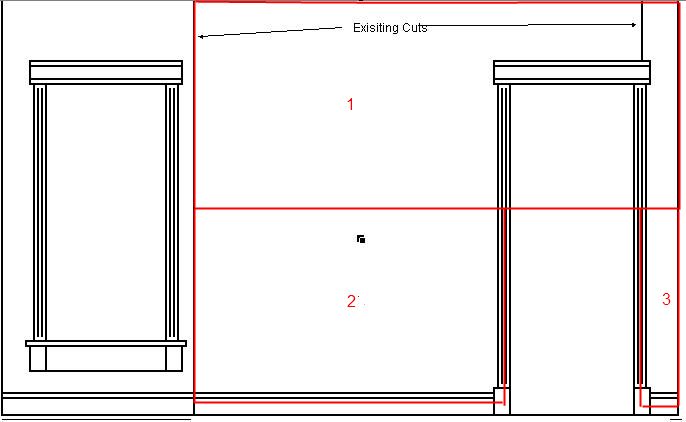If it was me, I wouldn't start using 12 foot sheets.
I'd use 3 inch long drywall screws to fasten a spruce 2X2 to the side of the stud beside the window, and screw another one to the studs at each 4 foot interval. The 2X2 allows you a full 1 1/2 inches to screw the drywall to so that you don't have to try and squeeze two edges into a single stud width.
Then I would attach strips of 1/2 inch thick spruce construction grade plywood to the baseboard (prolly with drywall screws) and rest each piece of drywall on the top surface of that plywood. Ensure that the plywood is a little narrower than the baseboard you intend to use.
I would use fiberglass mesh tape and I would do any seams where you don't have a contoured edge on both sides (like the one beside the window and over the door) with a curved trowel.
If you're new to drywalling, you may want to read my post in this thread:
http://www.houserepairtalk.com/f109/finish-drywall-basement-8301/
I can't even understand what you mean by the drywall "not matching up". As long as you spread the joint compound over the surface to make it smooth, the wall will look fine. If you have drywall on the wall, and you're replacing it with drywall, you're as good as on third base already. In my own building, I've been repairing 3/4 inch gyproc lath plaster walls using base coat plaster, drywall and joint compound, and it's not really very hard to do. It does take practice to get a nice job, but my post in the above thread will put some tricks up your sleeve to ensure you can do a professional looking job even if you don't have years of experience to rely on.







